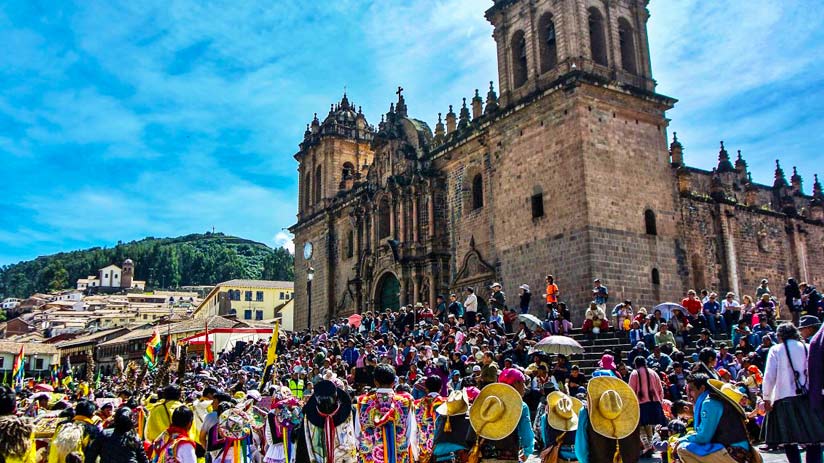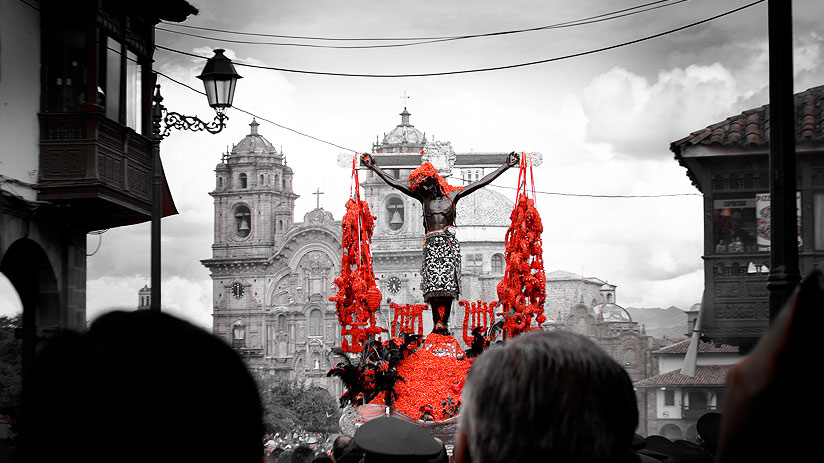Throughout time, in certain parts of the world, celebrations associated with Easter have been highlighting the international tourist interest that is carried out.
Easter in Peru, the feast of faith in our country, which commemorates the Paschal Triduum (moments of passion, death, and resurrection of Jesus Christ), is celebrated in its own styles. Peruvians have found a way to fuse Christian traditions with pre-Hispanic ones, giving rise to parties full of color, rite, and flavor during Easter in Peru. To name a few examples we have the Stations of the Cross Recreation live represented in the vast majority of cities in our country such as Lima, Arequipa, Moquegua, Ayacucho, Trujillo, among others, where tourists become participants and companions of these traditions of the place.
The representation of Jesus Christ falls to citizen actors and the stage, commonly, is a religious museum or a parish atrium. The organizations of the events are in charge of the Provincial Municipalities. It is a great show, impossible to miss in addition to the tours in Peru you may have planned to do.
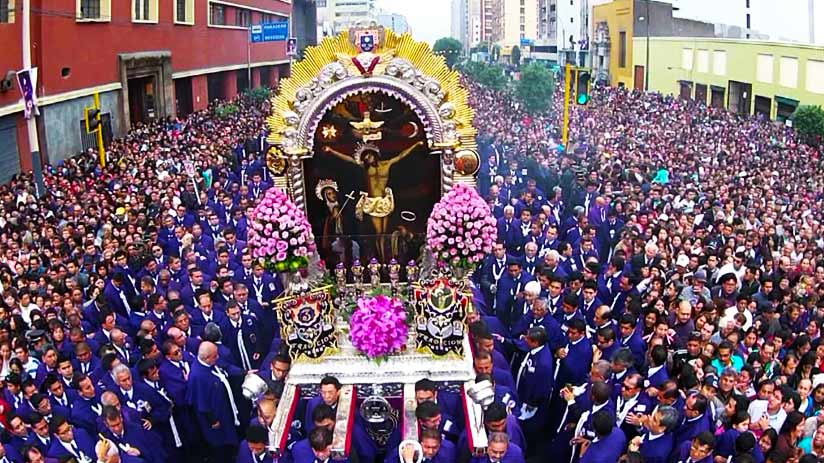
A unique example of Easter in Peru is the city of Cusco: families usually meet on Holy Thursday and Good Friday, which are national holidays, to prepare The Twelve Dishes (various stews salty and sweet). Savory stews are some soups such as “Lawa” or Cream of Corn and “Chupe Friday”, prepared with quinoa, corn, pumpkin, green beans, shrimp, eggs and cheese, and the background dish is made of fish with rice and vegetables. Among the sweet dishes, the typical desserts are “melocotones guisados”, “suspiros”, “arroz con leche”, “mazamorra morada” and “condesas” (pastry confection that contains corn). In addition, Cusco families do competitions in the same nucleus to congratulate those who have prepared the most delicious food. Regarding the typical desserts, it is worth mentioning the tourists who are visiting this season of the year, they can enjoy and savor these deserts by buying them at the San Pedro Market which is located just five small blocks from the Main Square of Cusco. This market is a very picturesque place and part of the tourist circuit that tour companies usually offer, so it is essential to take a walk there.
The most important and main religious celebrations of greater attraction for Easter in Peru in the day by day and about what to do in Peru include:
Palm Sunday
In the city of Cajamarca, Fiesta de Las Cruces de Porcón. The image of the Lord of Ramos is mounted on an ass or “Señorca”, which is pulled by children dressed as angels and the 12 apostles. The stewards of God’s grace adorn wooden crosses with mirrors, paintings, and flowers, which are representations of the soul of the devotees.
Holy Monday
In Cusco, this day is dedicated to the Lord of the Earthquakes or “Taytacha Temblores”. There is a massive procession, established after the earthquake that took place in the year 1650 and that destroyed the city. The figure of the Lord of the Earthquakes, that has a dark color, was before called Saint Christ of the Good Death. According to the parishioners, on the day of the earthquake they lit candles around him and gave him the mestizo color that he now shows.
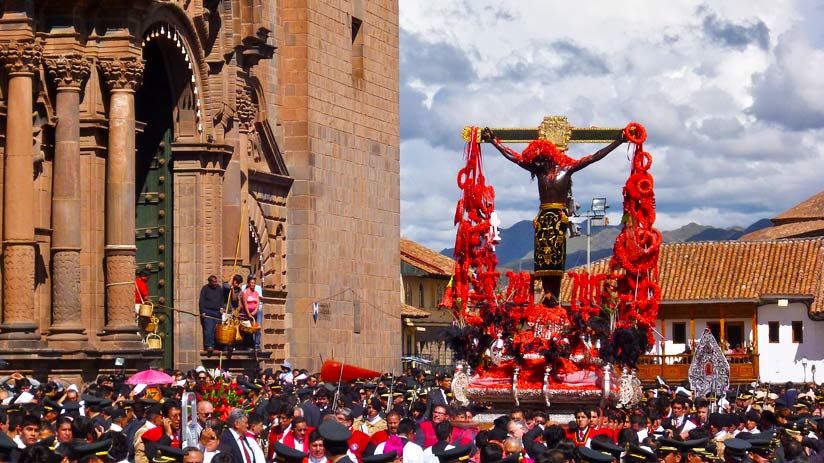
Holy Tuesday and Holy Wednesday
In Ayacucho, on Holy Tuesday the image of the Nazarene moves from the Santa Teresa Convent to the Santa Clara Temple, where it will be decorated for the Miércoles de Encuentro. At night, the Lord of the Sentence goes out in procession, from the Church of the Bitterness. On his way, he stops at 14 churches to pray the Stations of the Cross.
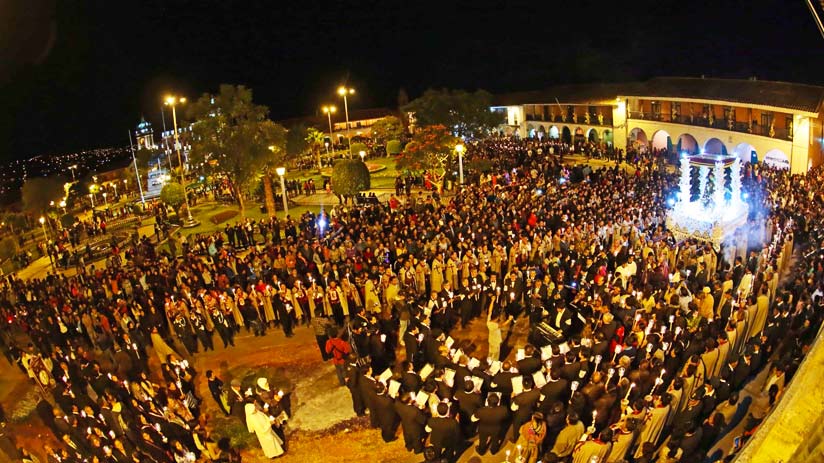
On Miércoles de Encuentro, the image of the Nazarene illuminated by hundreds of candles comes in procession. The peak moment occurs in the corner of the Municipality with the Old School of Fine Arts. There, the Sorrowful Virgin meets Jesus the Nazarene, her son, and bows three times, before he goes on his way to Calvary.
Holy Thursday
In Lima, the traditional Route of the Seven Churches is present. The Cathedral Basilica, the largest church in the country, founded the same year as the capital of Peru, Lima, is one of the most emblematic places for its architecture and religious art that keeps.
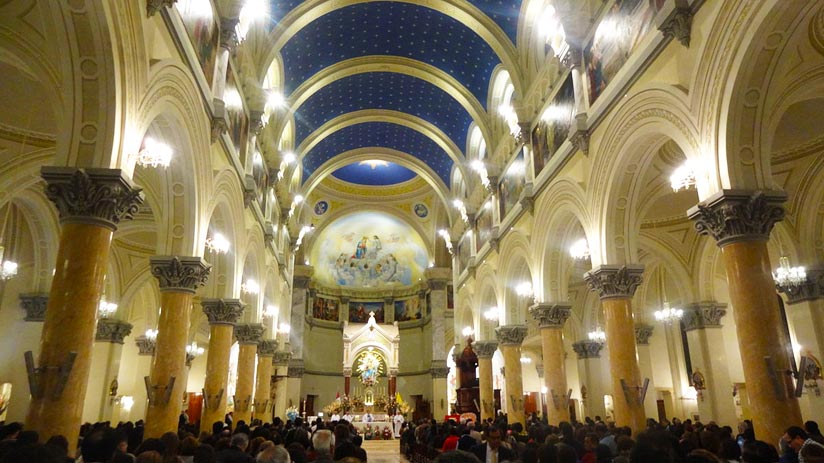
Good Friday
In Moquegua, Fiesta de las Posas (Cultural Heritage) in the district of Omate, province of Sánchez Carrión. The faithful prepare the so-called “posas” or giant altars that will bear the following day during the procession of the Holy Sepulcher. The protagonist image of this festival is the Lord of Compassions of Quinistacas, brought from Spain in the year 1555.
Glory Saturday
After commemorating the death of Christ on the cross the day before, this day is considered mourning and transition. In that sense, the Church does not allow any celebration. However, in some parts of the country such as Huancayo, in the region of Junín, the pilgrimage to the Holy Sepulcher is presented, in which a vigil is held to await the resurrection of Jesus. Hallelujah is rehearsed but in a low voice. It is a day of reflection.
Resurrection Sunday
In Arequipa, during the first hours of this day, the procession of the Divine Child of the Resurrection takes place, while the bells of the temples echo. In districts such as Cayma, Sachaca, Socabaya, and Yanahuara, the traditional burning of Judas takes place. The representation of the Apostle Judas is a life-size doll, filled with pyrotechnic games.
If for the first time you arrived here being part of the Peru tourism, the religiosity of Easter in Peru will allow you to star and share cultural, social and family practices that will be recorded spontaneously in the history of your personal and collective stories.
